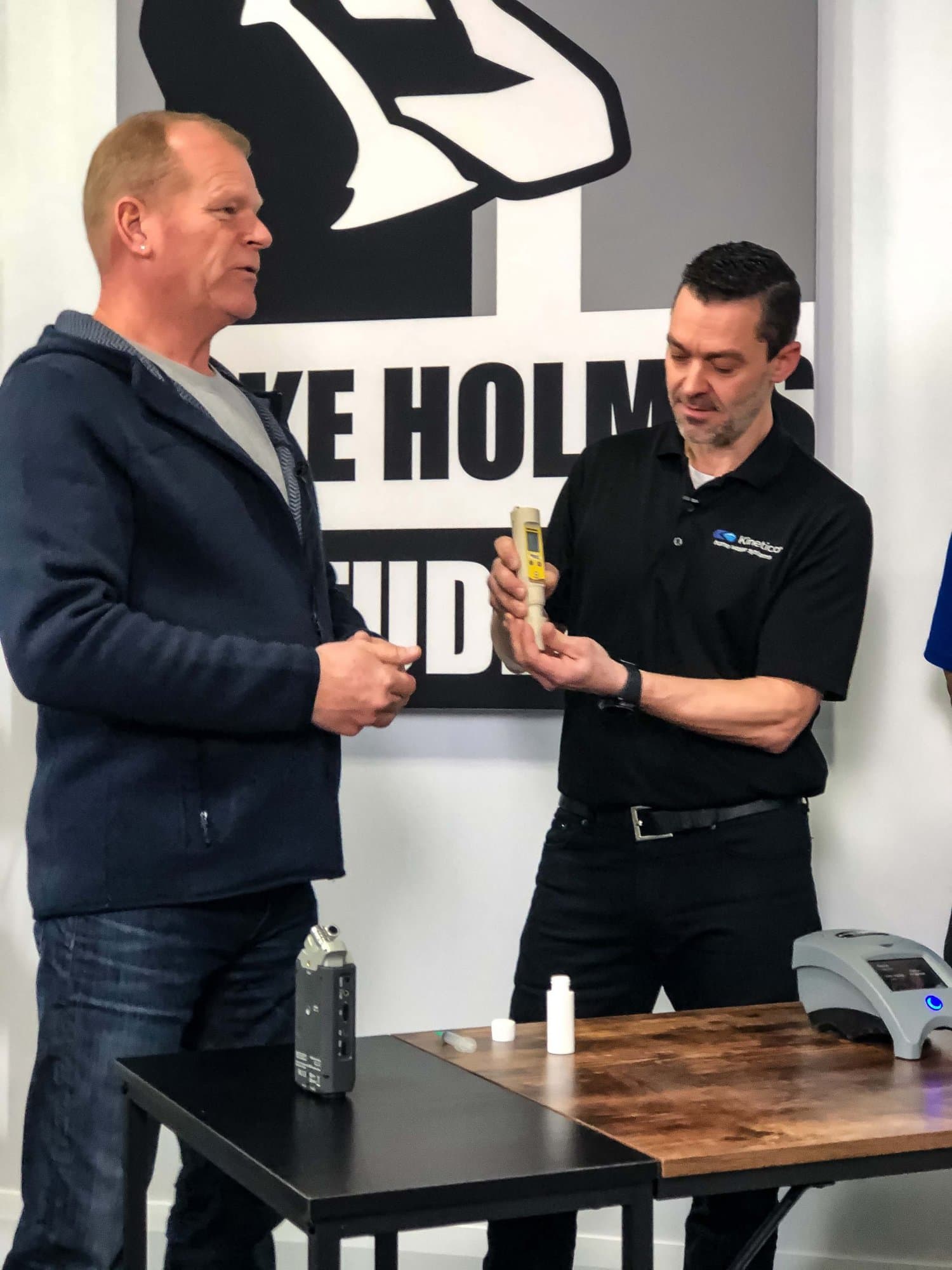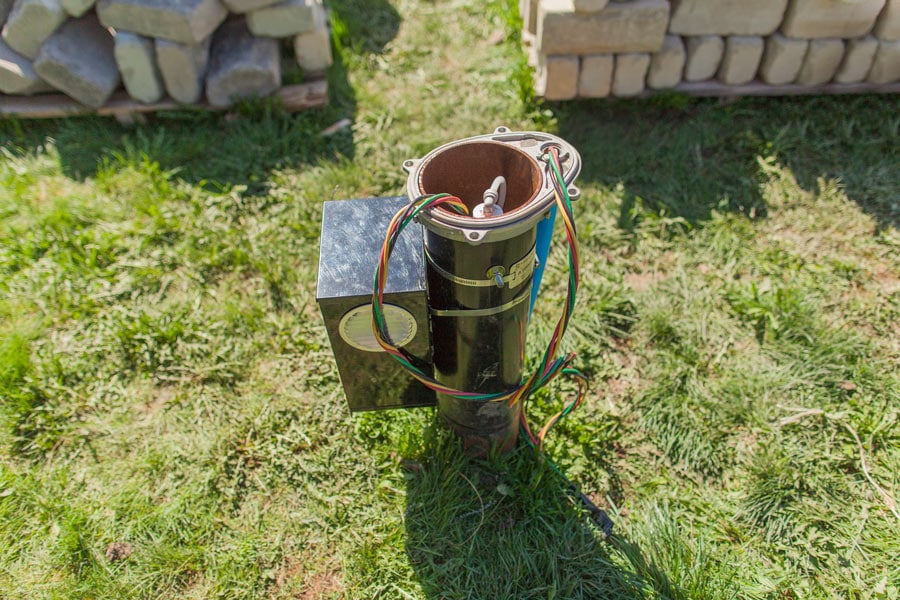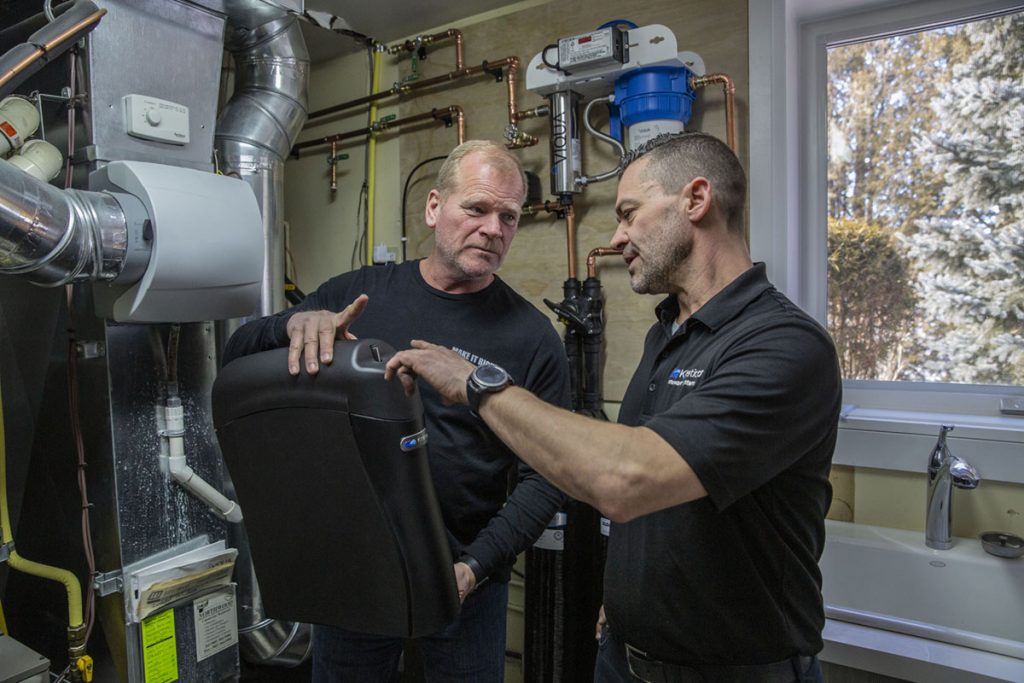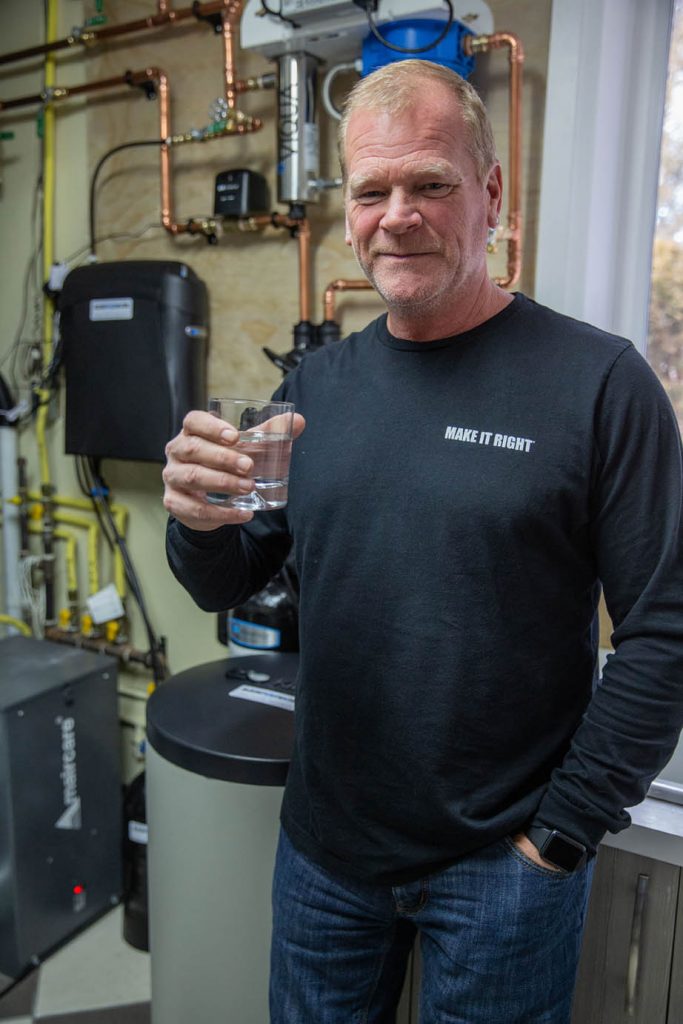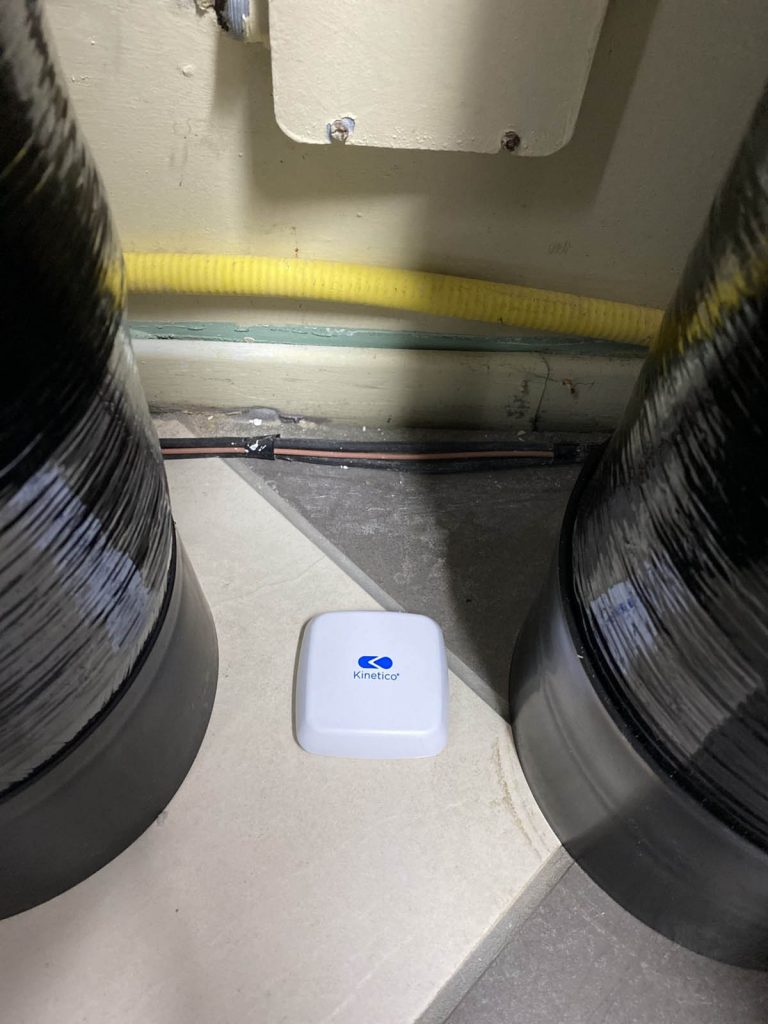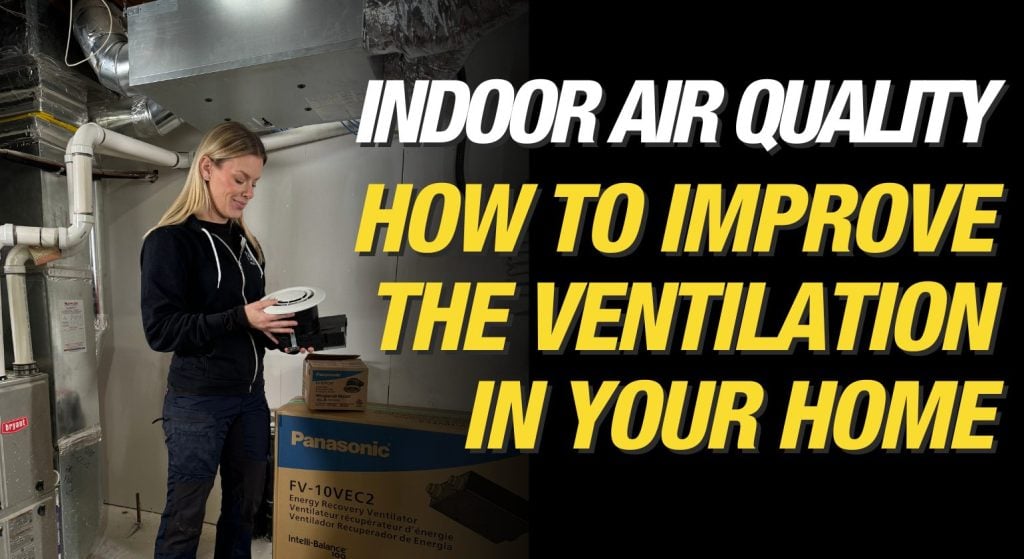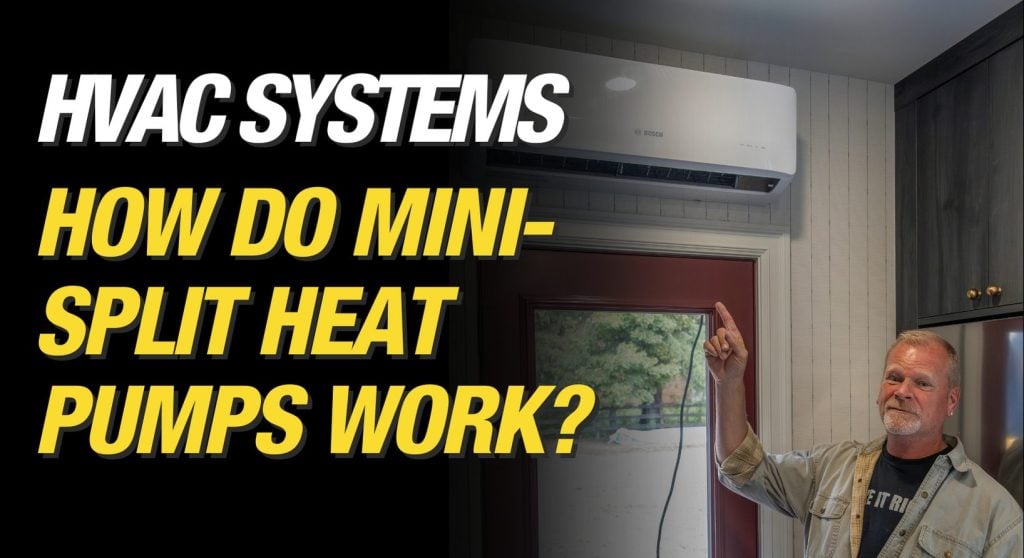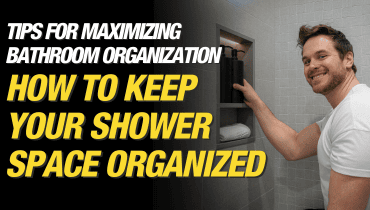HOW TO STAY ORGANIZED IN A SHOWER Keeping your bathroom organized can be a challenge, but with the right strategies and storage solutions, you can transform your shower area into...
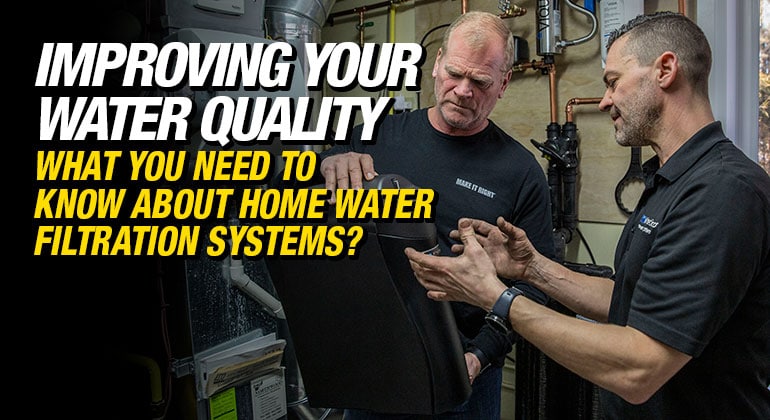
What Is The Best Water Filtration System For Your Home
By Mike Holmes
Mike’s Advice / Home Renovation
Friday, August 27th, 2021 @ 2:42pm
How To Improve Your Water Quality With Home Water Filtration Systems?
Water is an essential part of our everyday life. We use water for drinking and cooking, and also for everyday household tasks such as washing dishes, washing clothes, and so much more. But do you know what is in your water? Do you know what steps you can take to improve the quality of water flowing through your home?
It is so important to understand what is in your water and take the right steps to improve your water quality. A bad smell may be a sign that there is something wrong. However, it is not always easy to tell what contaminants exist unless you do a proper water test.
Here’s what contributes to poor water quality and what you need to know about getting a whole home water filtration system installed in your home.
What Causes Poor Water Quality?
I had a very high level of Total Dissolved Solids (TDS), which is the concentration of organic and inorganic dissolved solids. I had hard water too, which I felt on my skin and noticed as I saw the scale build up on my shower head and in my appliances. Eventually, I even had to replace my water heater which was not cheap.
To fix these problems and improve the water quality in my home, I had a new water filtration system installed by the water professionals at Kinetico. But first, they did a water test to determine what problems exist. Through this water test they can determine:
- TDS levels
- The Hardness of Water
- Contaminants in Your Water
RELATED:
How To Improve The Quality Of Water Flowing Through Your Home
What Are The Four Most Common Water Contaminants?
Whether you rely on municipal or well water, your water source is very likely going to contain contaminants. In other words, it will be unhealthy water. What type of contaminants of course depends on where you live, the exact water source, and other factors.
According to the United States Environment Protection Agency, some of the common contaminants can be categorized as the following.
Physical Water Contaminants
Physical contaminants include sediment or organic material that can be found suspended in the water of lakes, rivers, and streams as a result of soil erosion. They have the greatest influence on the physical appearance or other physical properties of water which would potentially alter the look of your water and are easier to spot.
Chemical Water Contaminants
Chemical contaminants might be natural or man-made. Nitrogen, salts, pesticides, iron, manganese, calcium, and traces of human or animal medications are all considered examples of chemical contaminants.
Biological Water Contaminants
Bacteria, viruses, protozoa, and parasites are examples of biological or microbial pollutants. While they could go undetected, high levels of biological contaminants can sometimes be dangerous. If you live in an area where the water is untreated, like well water, I recommend you get your water tested.
Did you also know that Radon can be found in your water, especially if you rely on well water for your home? Since radon naturally occurs in the soil and rocks it makes sense that radon can be found in your water source. Without access to atmospheric oxygen, groundwater supplies from the aquifer cannot effectively vent.
As a result, radon, methane, and other gases too can collect and accumulate in these water systems and if not mitigated can reach dangerous levels. Thankfully the Airwell is an effective solution to remove radon from your well water.
READ MORE
What Are The Most Common Types Of Home Water Filtration Systems?
There are many different types of water filtration or water purifying systems for your home, available in the market that work in different capacities to filter your water of any contaminants.
Water Filter Pitches
There are many water pitchers available on the market that come with a built-in replaceable filter that is designed to filter your water as it’s being poured out. Some of the benefits of water filter pitches include, that they are popular and readily available in the market, inexpensive, and portable, which is great if you’re looking for a water filtration system to take with you camping. However, they are not the most effective way to filter out your water because there are a lot of factors to consider.
Yes, some of them can reduce the levels of certain contaminants found in your water like lead and chlorine, and even reduce unpleasant tastes or smells. However, over time if the filter isn’t properly replaced, or if the pores in the filter are too big then it may not work as intended.
Not to mention there are lots of other contaminants like iron, calcium, sulphur, etc. that exist in your water these filters can’t remove them. If you have hard water or high TDS levels this will not help either.
Faucet-Mounted Water Filters
This is another relatively inexpensive solution that allows you to easily switch between filtered and unfiltered water, although I would recommend always using filtered water because it does have better quality. When it comes to installation, they’re relatively easy but they do take up some counter space and may not fit on all faucets.
Similar to water filter pitches, the filters on this will need to be regularly replaced. They also aren’t very effective as they aren’t able to filter out all contaminants. Simply put they’re not designed to work with your needs and water problems but rather common issues.
Under Sink Water Filter
Under-sink filters are generally effective in removing chlorine, some VOCs, and germs, and improving taste and odour, but they may not be effective in removing all contaminants including iron, calcium, sulphate, and other minerals. They also won’t be able to reduce the hardness of your water, if this is a problem you have.
In addition, under-sink filters are generally effective in removing chlorine, some VOCs, and germs, and improving taste and odour but they may not be effective in removing all contaminants including iron, calcium, sulphate, and other minerals. They also won’t be able to reduce the hardness of your water, if this is a problem you have.
Whole-House Water Treatment
Whole-house water treatment systems treat all water entering the home, not just your drinking water. This system can often contain many units that are responsible for treating your water in different ways. For example, whole home water filtration systems can include a water softening unit to reduce your water’s hardness.
They are also more effective in removing more contaminants from your water. According to the Centers for Disease Control and Prevention, treatment systems are 100% effective in removing all contaminants from water.
What Are The Best Water Filtration Systems To Buy For Your Home?
There are many different types of residential water filters on the market. I recommend looking into whole home water filtration systems. While they might be more expensive upfront, they are more effective in filtering your water and improving its quality. They’re able to treat not only your drinking water but all the water flowing through your home.
The great thing about these systems is that they are customized to your needs. Water professionals will first have to do a water test to determine what’s in your water, to be able to recommend the best system that suits your needs and your home’s needs —including reducing TDS levels if your levels are high and softening your water.
They’re also easier to maintain, you don’t need to constantly change the filters to improve your water quality.
TIP: Whether you rely on well water or municipal water, it’s important to get your water tested by professionals. This will give you a better understanding of what contaminants exist in your water and what system is best suited for you.
How Do Water Filtration Systems Work?
Different filtration systems work in different ways based on what their purpose is. Are they to soften water? Are they to filter out contaminants such as iron, lead, bacteria, and metals?
Think about your source of household water. Are you relying on a municipal system to supply your water or a private well? That may help you determine if you need more specific systems to help treat the water in your home.
For me, because I rely on well water, a whole-house water filtration system was a great solution to ensure that every drop flowing through my home was clean and crisp. I also had a reverse osmosis system (RO) installed because I wanted to reduce any contaminants in my water — and I love the taste of RO water!
RELATED
Here is a closer look at the systems I had installed at my house:
#1 – Water Softener to Reduce Your Hard Water Levels
A water softening system is a great way to reduce the hardness of your water. The Kinetico water softener unit has a bed of resin that uses an ion exchange process to remove calcium and magnesium in your water, in turn, softening it. This filtration system is available around the clock, when you need it, to provide you with clean, soft water on demand.
Other benefits I love about the system installed at my house:
- Multiple Tank Systems – With up to four available tanks you can combine water softening and dechlorination in a single unit to save money and space. It also means you will always have a tank providing soft, clean water, even when the system is cleaning itself.
- On-Demand Regeneration – The system only regenerates when necessary, after a set amount of water has been softened and used. Regeneration only happens when necessary, not at a predetermined time.
- Non-Electric – My softener is powered by the energy of moving water, not electricity. So there are no timers or computers to set, adjust, repair or replace.
- Generous Flow Rates – This system is designed for homes with larger plumbing and high consumption in mind. It allows you to have a generous flow rate throughout your house without compromising on softness.
RELATED:
#2 – Drinking Water Filtration System To Improve Your Water Quality
K5 Drinking Station
I have the K5 Drinking Station installed and let me tell you this was one of the best decisions I made. I am a huge fan of Reverse Osmosis water. To me, it just tastes better.
Reverse Osmosis Water
Using reverse osmosis technology, the filtration system’s membrane separates the water from the contaminants and flushes them to drain. This ensures that I get clean and refreshing water every time I turn on the tap.
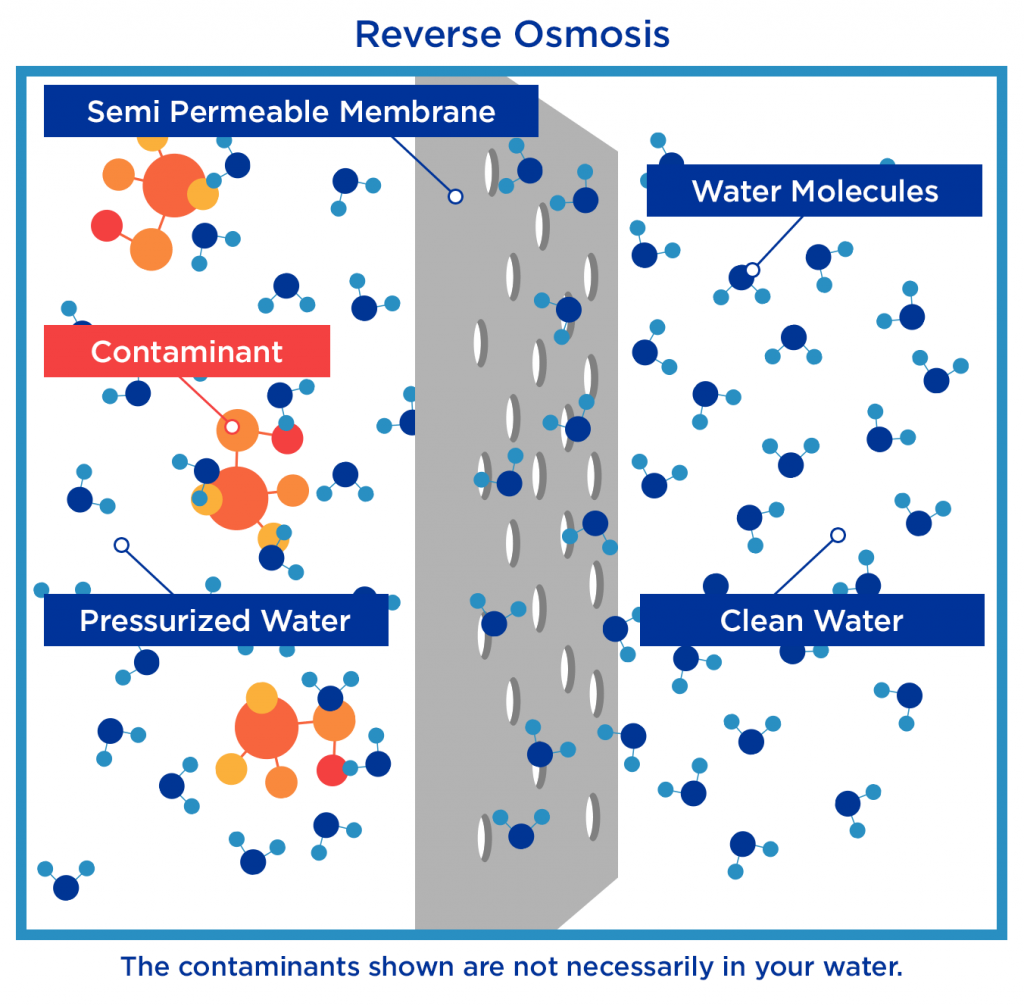
How A Reverse Osmosis System Works. Illustration Source: Kinetico Water Systems.
Some of the features of this system include:
- QuickFlo® Technology – This technology allows the K5 to deliver a constant strong, steady stream of high-quality water. Here is a fact I learned when I had this system installed, the K5 produces more water faster than any other comparable system so you don’t have to ration your supply. How great is that?
- High Level of Contaminant Removal – This system provides a 99% reduction rate for many contaminants.
- Customizable Multi-Stage Filtration – Every home has different needs based on what contaminants exist in your source water. With this system, you can customize the filters according to the specific water challenges you face in your home. Plus, it is easy to install and replace the filters so you don’t need to wait for someone to come in and do it for you.
- EverClean® Rinse – This feature allows the K5 system to use high-quality water to self-clean. This means the system is continuously working to produce better quality water for you while extending the membrane’s life.
RELATED
#3 – Leak Detection Systems To Protect Your Home From Water Damage
Another great addition to my new filtration system is the leak detection system. The Kinetico Leak Detection System has a water shutoff valve, leak sensors, and a hub. They all work together to stop a leak in your home before it becomes a problem.
The monitoring app can alert me of a leak within seconds. I can even shut off the water in my home from anywhere at any time. I love that! Now I don’t have to worry about a potential leak, while I’m on the road filming.
How To Maintain A Water Softener?
One of the great features of Kinetico’s Water Softener is that it can maintain itself. When the resin bed is full of hardness ions, the system draws a brine solution from the salt storage tank. This brine solution cleans the resin bed, making it ready to continue softening the water. All I have to do is add water softener salt once in a while.
The cost of water filtration systems can range anywhere from $20 to hundreds of dollars for a whole house water treatment system. There are many factors to consider, including budget and where you live. I recommend getting a water test done by professionals. They will be able to recommend and install the right system for your home. This is important if your home relies on well water as it could contain more contaminants, as the water comes directly from the ground.
RELATED
7 Ways to Conserve Water In Your Home
How To: Improve The Quality of Water Flowing In Your Home
Gas Tankless Water Heaters | What You Should Know
